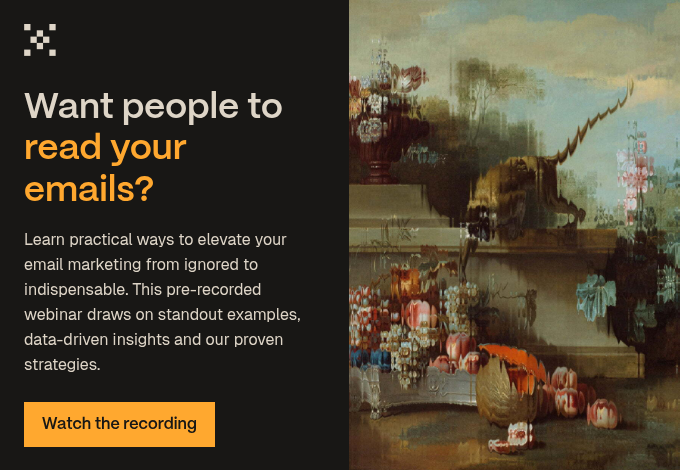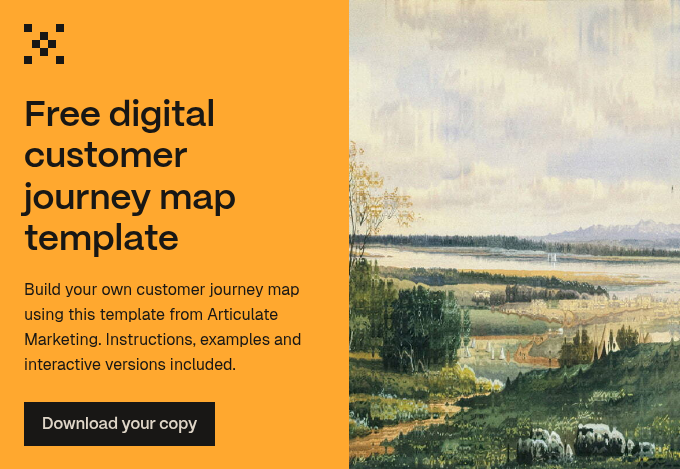Is a buyer journey the same as a user journey? Is a user journey simply a customer journey by another name?
Actually, they are different. And, marketers, you’d be wise to bear those differences in mind.
Buckle up; answers ahead. First stop:
1) Customer journey
The customer journey — or customer lifecycle — is how a business defines the status of a customer. Are they a lead? Are they qualified by sales? Are they a returning customer?
There are five basic categories within the customer journey. However, some companies add or remove categories, and some define each category in their own way.
- Lead. Someone who is in your contact database. For example, a lead may have filled in a form on your website and, in doing so, agreed to be contacted by your business in the future.
- Marketing Qualified Lead (MQL). A lead that has been qualified by marketing. At Articulate, we do this using marketing automations available with HubSpot Marketing Hub, but you can do this manually, too.
- Sales Qualified Lead (SQL). A lead that has been qualified by sales. This is often done manually by sales reps.
- Opportunity. A lead that has engaged with the sales process. For example, they may have booked a discovery call.
- Customer. A lead that has bought from your organisation.
It’s worth noting that the customer journey doesn’t necessarily end once a lead becomes a customer. It’s possible for an existing customer to go on to be a brand champion for your business, for example. Or, they can present an opportunity for upsell.
2) Buyer journey
From the authorities at HubSpot:
‘The buyer's journey describes a buyer's path to purchase. In other words, buyers don't wake up and decide to buy on a whim. They go through a process to become aware of, consider and evaluate, and decide to purchase a new product or service.’
It’s broken down into three stages: Awareness, Consideration and Decision.
Crucially, it represents the customer’s perspective on making a purchase. It ends once they’ve reached a decision and made a purchase.
The Awareness stage is where the buyer has reached their limit (dang it!). Some pain point, some goal has gotten to a critical stage. It’s time to take action. So, now, they’re beginning to go into research mode. 77 percent of B2B buyers say they do their own research first, rather than immediately speaking to a sales rep.
Example: A manager might be concerned about their team’s efficiency, so they’re looking at ways to boost productivity. They don’t know what the answers are. But, they’re looking at things like forums, blogs and social media.
The Consideration stage is where a buyer has figured out the options. They’ve narrowed their focus to a few potential solutions. The manager from our above example is intrigued by the possibilities that digital tools for data sharing and communication offer. They’re looking at whitepapers and signing up to newsletters to dig deeper (rather than searching wide at awareness stage).
The Decision stage is where the buyer is contemplating providers and specific solutions. In our example, that might be deciding between Microsoft 365 and Google Apps. Our manager is choosing between companies that offer onboarding support for these tool suites. They’re comparing costs. They’re reading case studies and asking for demos. In fact, 59 percent of B2B buyers require a demo before making a decision.
3) User journey
A user journey is the experience a person has when interacting with anything digital, such as software or a website.
It’s a term used by UX (user experience) designers, website designers or user-centred designers. It refers to the specific interactions that users have with a virtual medium, going from the first point of contact through every subsequent action. Often, a user journey can be visualised with a user journey map.
Although you can’t control how users interact with your website or software, you can put some clear markers in place. That might be a call-to-action on an article that encourages the reader to download an eBook for more in-depth information on a topic.
When it comes to a company’s website, you want a user to become a lead, right? So, that website has to be designed with user journeys that achieve the goal of lead generation.
Destination: Leads (not to be confused with Leeds)
Your leads are on a journey. To Yorkshire, to the Lonely Mountain… to your contact database.
Of course, the journey matters as much as the destination.
With B2B, customer relationships begin long before they sign on the dotted line. That second they land on your website. The first few touchpoints with Marketing. An initial chat with a salesperson. These moments will set the tone for your whole adventure together. Start strong!

 Posted by
Maddy Leslie
Posted by
Maddy Leslie






